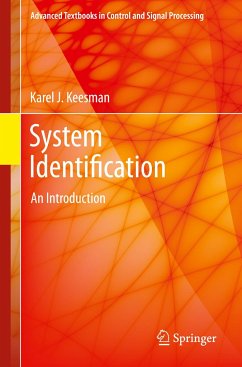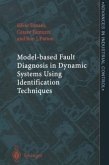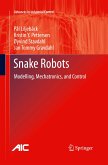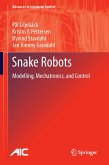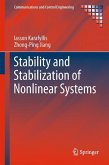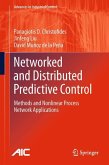System Identification shows the student reader how to approach the system identification problem in a systematic fashion. The process is divided into three basic steps: experimental design and data collection; model structure selection and parameter estimation; and model validation, each of which is the subject of one or more parts of the text.
Following an introduction on system theory, particularly in relation to model representation and model properties, the book contains four parts covering:
- data-based identification - non-parametric methods for use when prior system knowledge is very limited;
- time-invariant identification for systems with constant parameters;
- time-varying systems identification, primarily with recursive estimation techniques; and
- model validation methods.
A fifth part, composed of appendices, covers the various aspects of the underlying mathematics needed to begin using the text.
The book uses essentially semi-physical or gray-box modeling methods although data-based, transfer-function system descriptions are also introduced. The approach is problem-based rather than rigorously mathematical. The use of finite input-output data is demonstrated for frequency- and time-domain identification in static, dynamic, linear, nonlinear, time-invariant and time-varying systems. Simple examples are used to show readers how to perform and emulate the identification steps involved in various control design methods with more complex illustrations derived from real physical, chemical and biological applications being used to demonstrate the practical applicability of the methods described. End-of-chapter exercises (for which a downloadable instructors' Solutions Manual is available from fill in URL here) will both help students to assimilate what they have learned and make the book suitable forself-tuition by practitioners looking to brush up on modern techniques.
Graduate and final-year undergraduate students will find this text to be a practical and realistic course in system identification that can be used for assessing the processes of a variety of engineering disciplines. System Identification will help academic instructors teaching control-related to give their students a good understanding of identification methods that can be used in the real world without the encumbrance of undue mathematical detail.
Following an introduction on system theory, particularly in relation to model representation and model properties, the book contains four parts covering:
- data-based identification - non-parametric methods for use when prior system knowledge is very limited;
- time-invariant identification for systems with constant parameters;
- time-varying systems identification, primarily with recursive estimation techniques; and
- model validation methods.
A fifth part, composed of appendices, covers the various aspects of the underlying mathematics needed to begin using the text.
The book uses essentially semi-physical or gray-box modeling methods although data-based, transfer-function system descriptions are also introduced. The approach is problem-based rather than rigorously mathematical. The use of finite input-output data is demonstrated for frequency- and time-domain identification in static, dynamic, linear, nonlinear, time-invariant and time-varying systems. Simple examples are used to show readers how to perform and emulate the identification steps involved in various control design methods with more complex illustrations derived from real physical, chemical and biological applications being used to demonstrate the practical applicability of the methods described. End-of-chapter exercises (for which a downloadable instructors' Solutions Manual is available from fill in URL here) will both help students to assimilate what they have learned and make the book suitable forself-tuition by practitioners looking to brush up on modern techniques.
Graduate and final-year undergraduate students will find this text to be a practical and realistic course in system identification that can be used for assessing the processes of a variety of engineering disciplines. System Identification will help academic instructors teaching control-related to give their students a good understanding of identification methods that can be used in the real world without the encumbrance of undue mathematical detail.
From the reviews: "The book presents a systematic overview of the fundamental problems and methods in the modern system identification theory. The material is divided into four parts covering data based non-parametric identification methods, time-invariant system identification, time-varying system identification and model validation problems. ... Each chapter of the book is finished with references, historical notes and exercises to be solved by the reader. ... Numerous examples ... demonstrate the practical applicability of the presented methods. The book can be recommended for students and practitioners for self-study." (Zygmunt Hasiewicz, Zentralblatt MATH, Vol. 1230, 2012)

